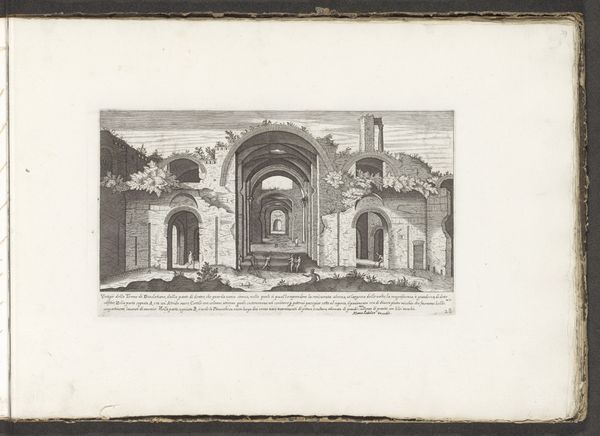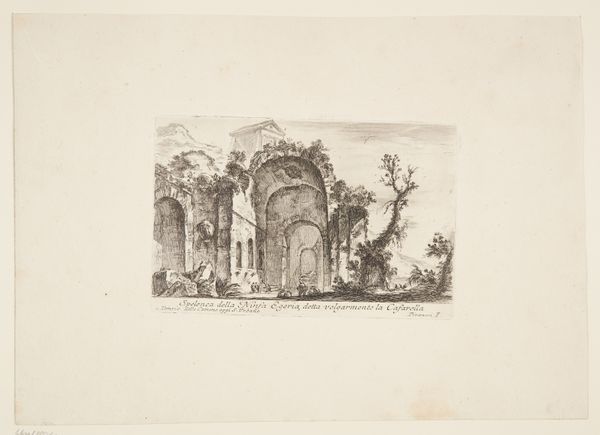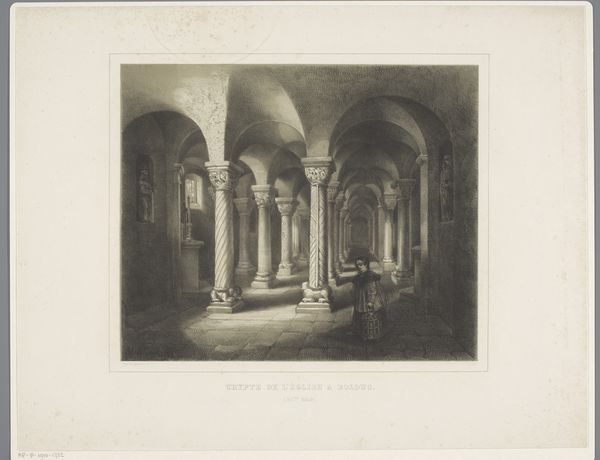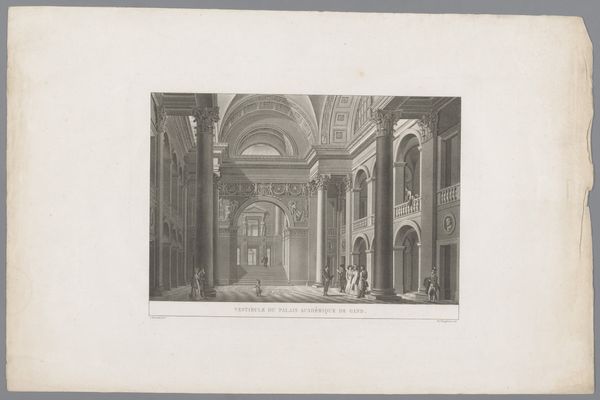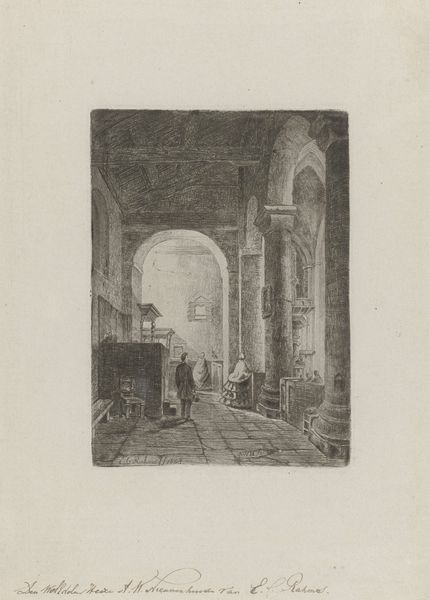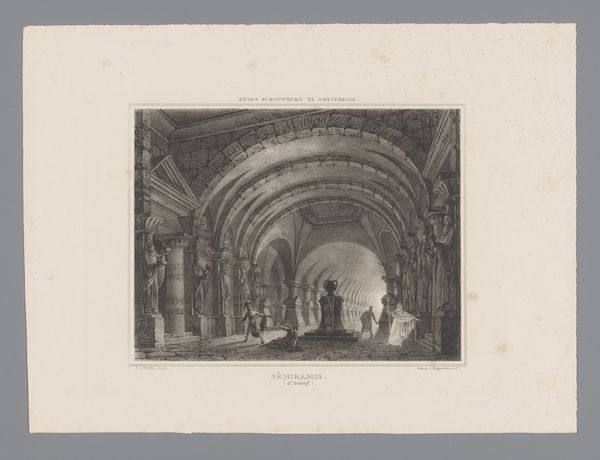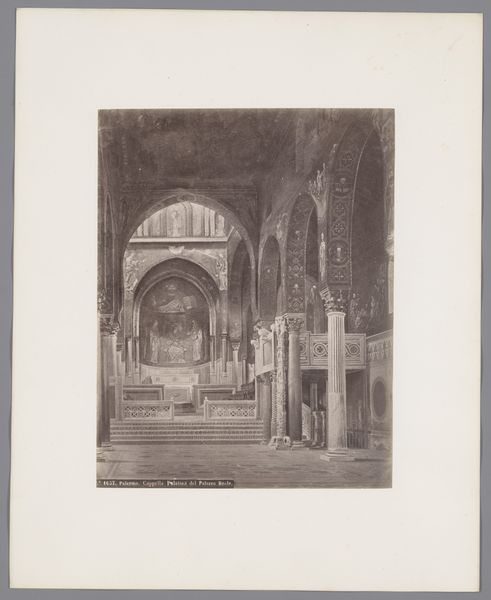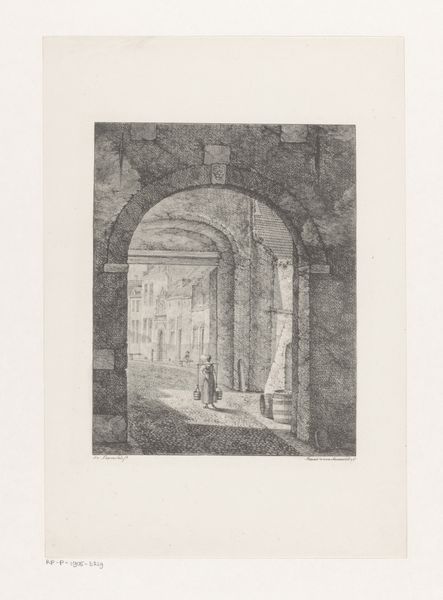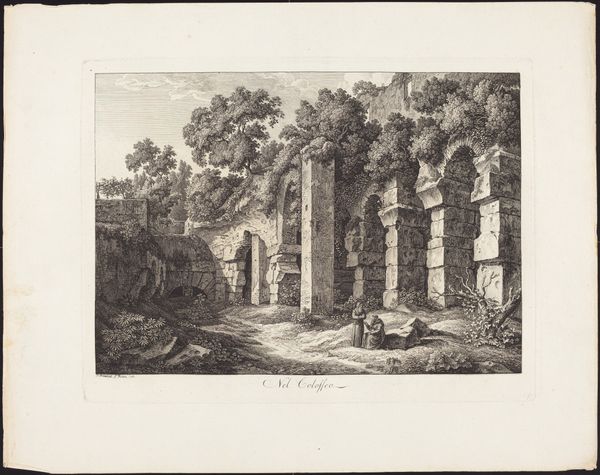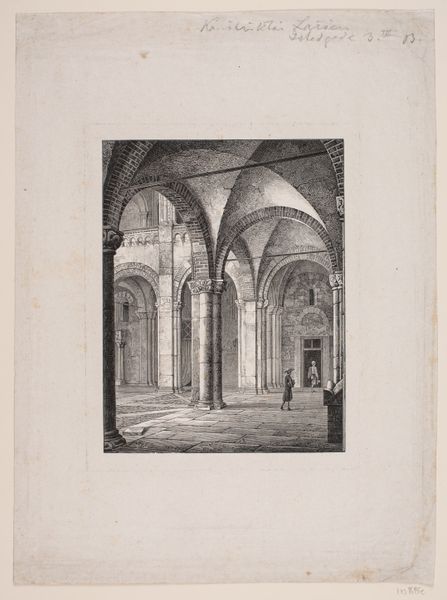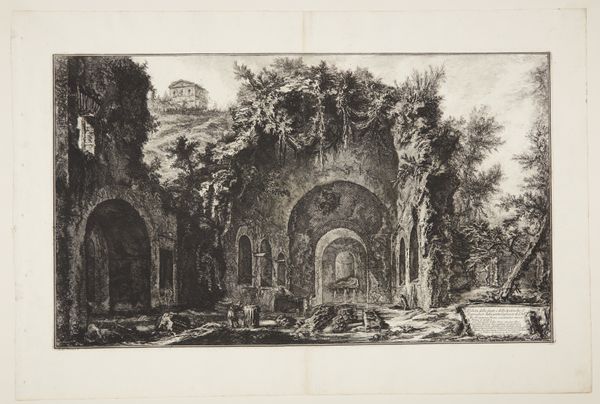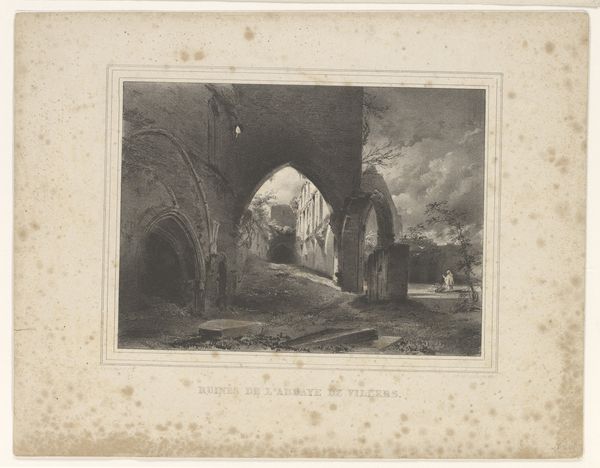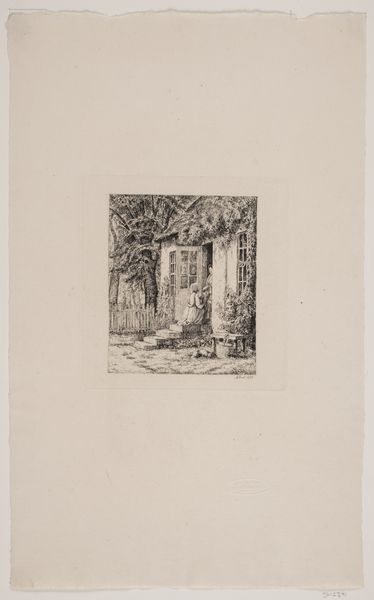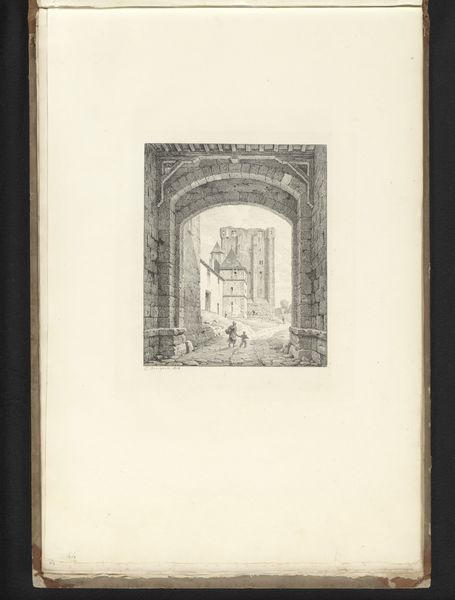
Dimensions: height 199 mm, width 278 mm
Copyright: Rijks Museum: Open Domain
Curator: Octave Guillaume de Rochebrune’s 1876 etching, "Tempel van Diana in Nîmes," offers a romantic vision of ancient architecture reclaimed by nature. Editor: There’s a captivating melancholy to this print, wouldn't you say? The stark monochrome emphasizes the temple’s ruination, yet light finds ways to make the whole composition serene and contemplative. Curator: The artwork aligns with Neoclassical art through subject and technique; Rochebrune sought to capture the past, yet imbued it with contemporary Romantic sentiments about history and time. Etching and engraving granted fine control to create texture that mimicked the ruin. Editor: I'm struck by the way Rochebrune highlights the dialogue between architecture and the natural world. Vines snake up stone walls, obscuring rigid architectural lines with the untamed beauty of nature’s reclamation. The way the temple has become almost engulfed reminds us about humanity's lasting effect on the Earth and that monuments don't stand forever. Curator: The Temple of Diana itself was used for bathing and perhaps as a place for sanctuary. Rochebrune's architectural depictions underscore how power expresses itself through built spaces. But even these displays are impacted by time, as you note. Editor: And Rochebrune isn't just preserving architecture; he is staging it. The eye moves deeper and deeper as more architectural layers present themselves and draw us in as witnesses, considering our present reality compared to past and future states. Curator: Precisely. Rochebrune's choice of printmaking, and etching specifically, mirrors the wider revival of graphic arts that was intertwined with an appreciation of historical architecture and picturesque ruins in late 19th-century Europe. Editor: Seeing a temple through Rochebrune’s eyes prompts contemplation on civilization's impact and how society frames a narrative between structure and time. The contrast makes for such a compelling reflection on humanity's role as builders and storytellers. Curator: Yes, and with that, it invites an open and contemporary reading of that space in that timeframe, which helps further a complex understanding about structures and legacy.
Comments
No comments
Be the first to comment and join the conversation on the ultimate creative platform.
